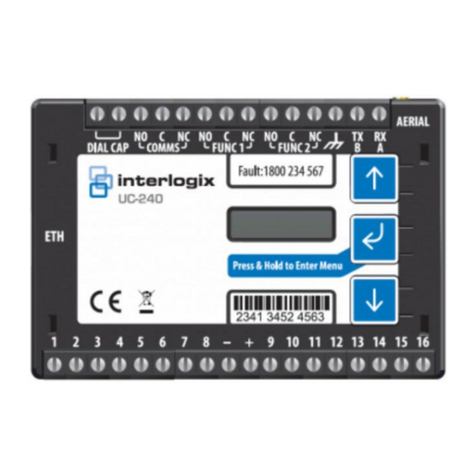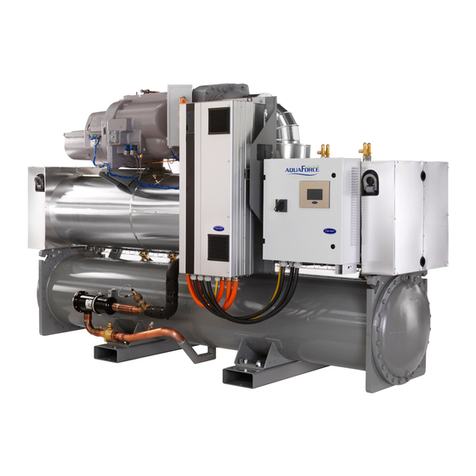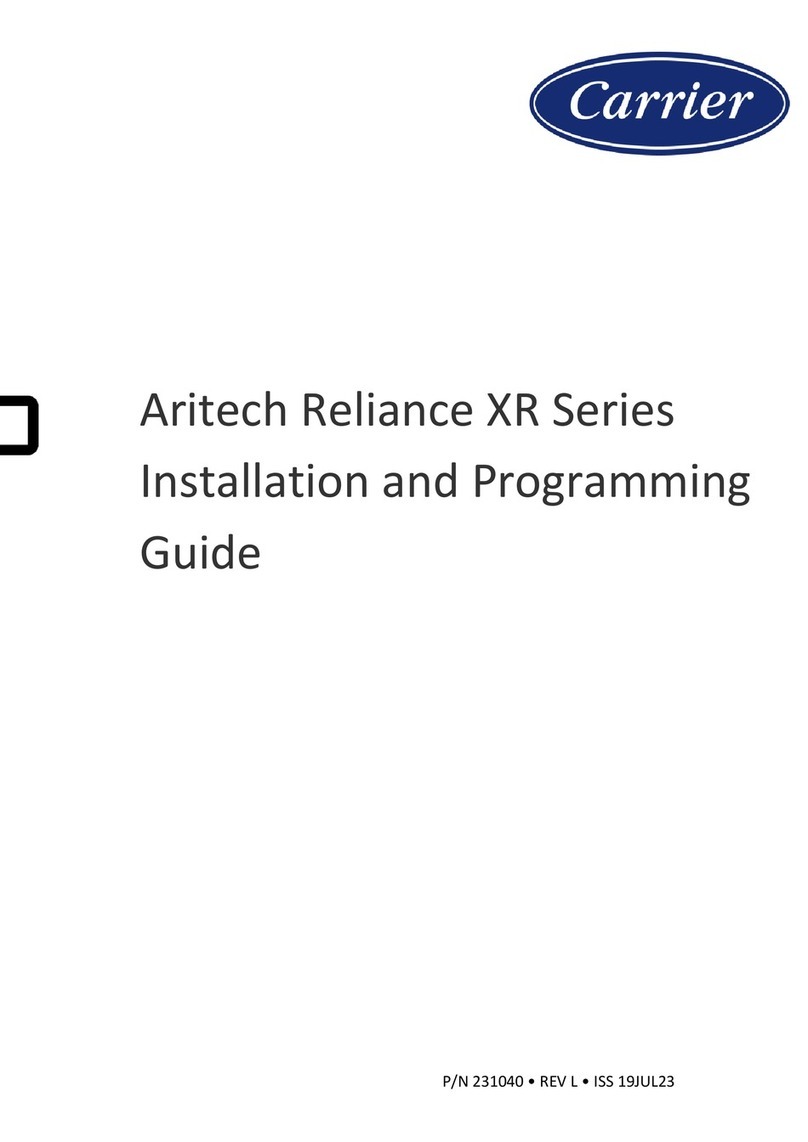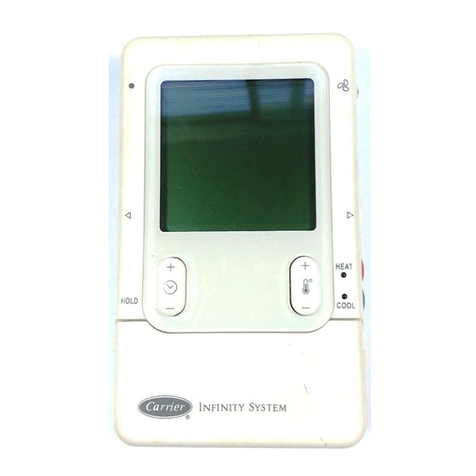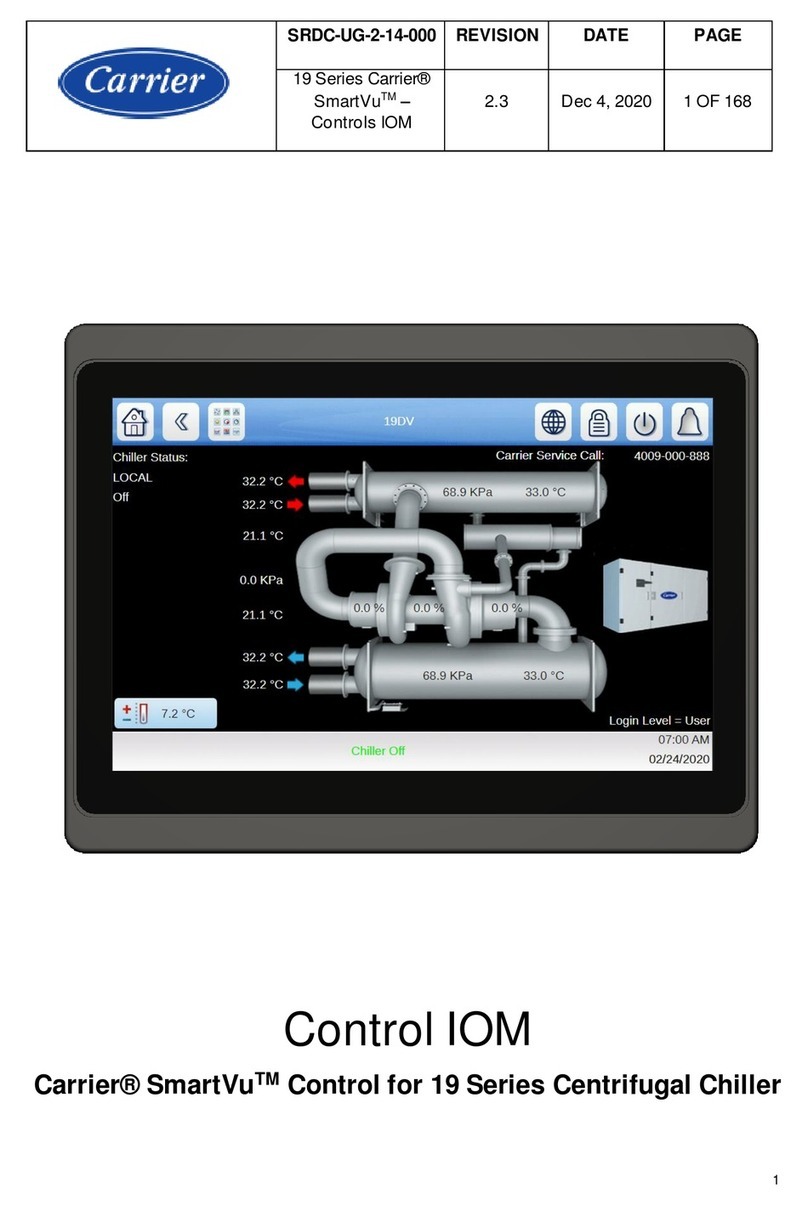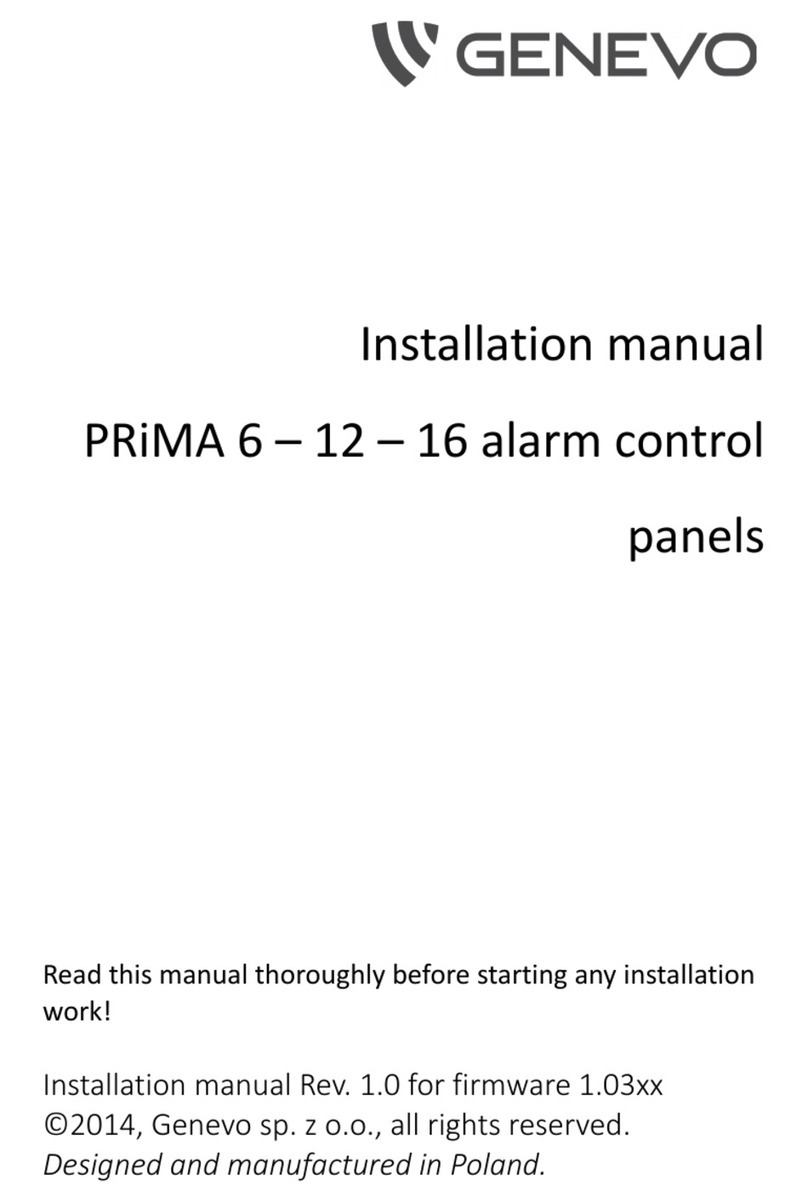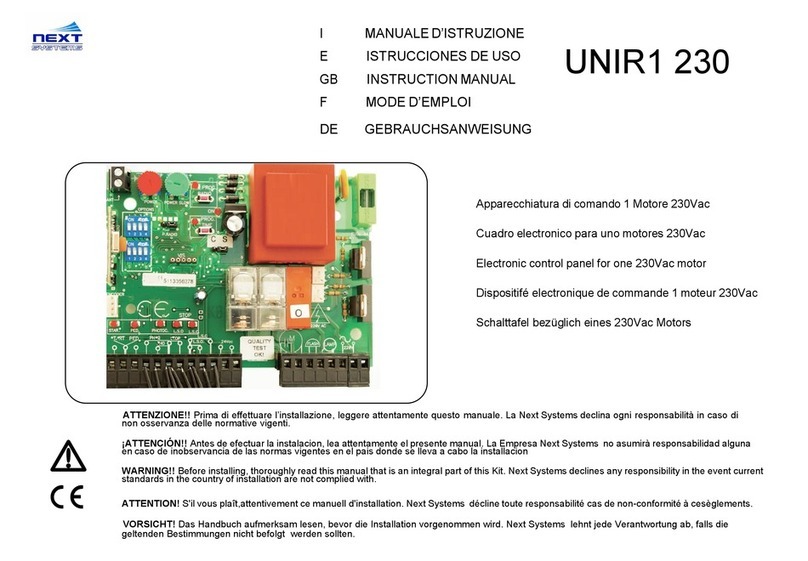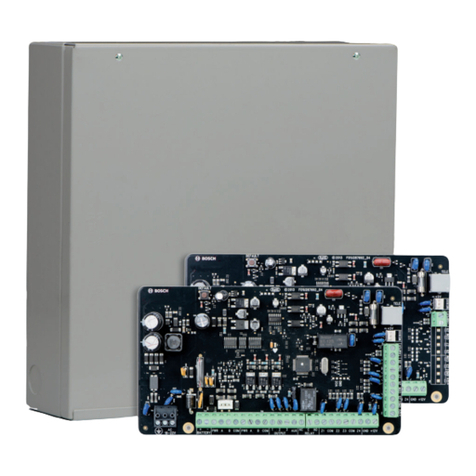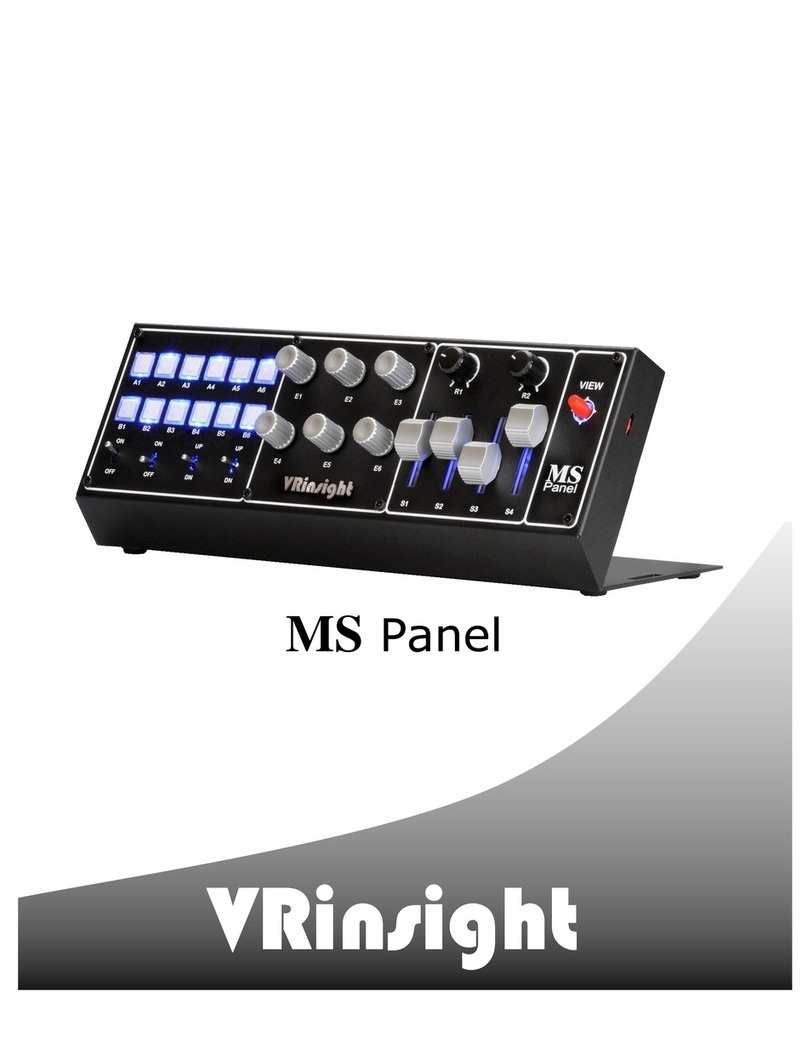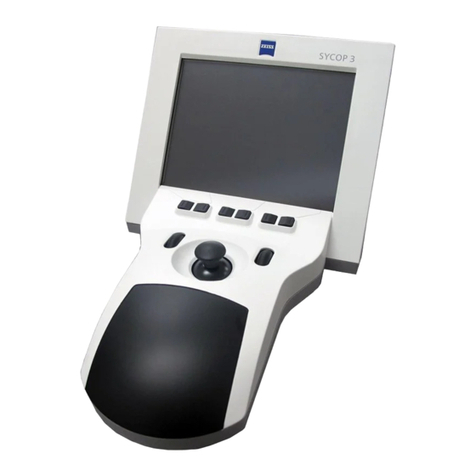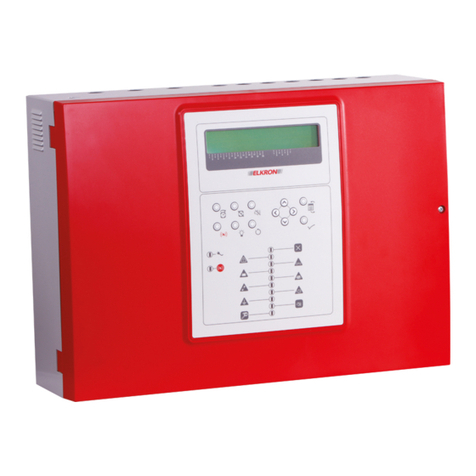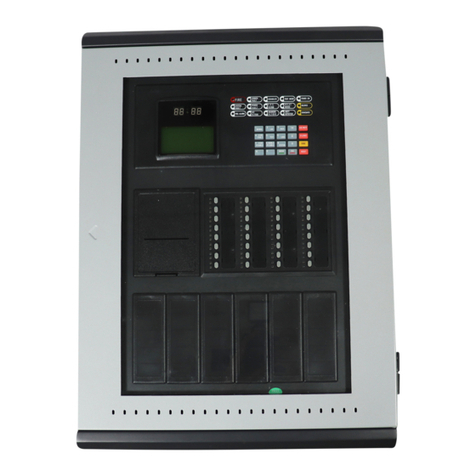
7
3 - HARDWARE DESCRIPTION
3.1 - Control boards
All boards making up the SmartVuTM control system are installed
inside the electrical cabinet. They communicate via an internal
LEN bus.
The system may embrace up to two SIOB boards, where the rst
board is used to manage all major inputs and outputs of the
controller, whereas the second SIOB board is used to support
either the compressor of circuit A or circuit B.
The rst SIOB board is also referred to as the main board – the
main board continuously monitors the information received from
various pressure and temperature probes and accordingly starts
the program that controls the unit.
At the same time, up to two (2) AUX1 boards can be installed. The
rst AUX1 board may provide additional inputs and outputs used
to monitor chiller water system cooling temperature (Master/Slave
assembly), leakage charge detection readings, electric heating or
boiler operation. This board is used only for smaller units (units
with only one fan) that have any of the aforementioned options
available (electric heaters, boiler, etc.).
The second AUX1 board is optional and it is used for units with
the dry cooler option. It provides information required to control
the free cooling cycle.
3.2 - Power supply to boards
All boards are supplied from a common 24 VAC supply referred
to earth. In the event of a power supply interrupt, the unit restarts
automatically without the need for an external command. However,
any faults active when the supply is interrupted are saved and
may in certain cases prevent a given circuit or the unit from
restarting.
CAUTION: Maintain correct polarity when connecting the power
supply to the boards, otherwise the boards may be damaged.
3.3 - Light emitting diodes
All boards continuously check and indicate the proper operation
of their electronic circuits. A light emitting diode (LED) lights on
each board when it is operating properly.
■ The red LED ashing for a two-second period indicates correct
operation. A dierent rate indicates a board or a software failure.
■ The green LED ashes continuously on all boards to show that
the board is communicating correctly over its internal bus (LEN
bus). If the green LED is not ashing, this indicates a LEN bus
wiring problem or a conguration issue.
3.4 - SmartVuTM connections
Connections are located on the bottom of the main controller.
■The control oers communication protocols such as LEN, CCN
(Carrier Comfort Network), Modbus, or BACnet.
■It is possible to enable and disable end of line resistors via the
System menu (see section 5.6).
■One Ethernet port allows for TCP/IP communication or BMS
(Building Management System) connection.
3.5 - Pressure transducers
Three types of transducers (high pressure, low pressure, water
pressure) are used to measure various pressures in each circuit.
These transducers deliver 0 to 5 VDC. They are connected to the
SIOB board.
■Discharge pressure transducers (high pressure type)
These transducers measure the discharge pressure in each
circuit. They are used to control condensing pressure or high
pressure load shedding. Discharge pressure sensors are
mounted on the discharge line piping of each circuit.
■Suction pressure transducers (low pressure type)
These transducers measure the suction pressure in each circuit.
They are used to control EXV, evaporating pressure (in heating
mode) and monitor suction pressure safeties related to the
compressor operating envelope. Suction pressure sensors are
located on the common suction piping of each circuit.
■Pump inlet/outlet water pressure transducers
(water pressure type, hydronic kit option)
These transducers measure the hydronic kit pump water inlet/
outlet water pressure and monitor the water ow. Pump inlet/outlet
water pressure sensors are mounted on the optional hydronic kit.
3.6 - Temperature sensors
Temperature sensors constantly measure the temperature of various
components of the unit, ensuring the correct operation of the system.
■Water heat exchanger entering and leaving water
temperature sensors
The water heat exchanger entering and leaving water temperature
sensors are used for capacity control and safety purposes.
■Outdoor air temperature sensor
This sensor measuring the outdoor air temperature is used for
start-up, setpoint temperature reset and frost control.
■Suction gas temperature sensors
These sensors measure the suction gas temperature. They
are used for the EXV control. Suction gas temperature sensors
are located at the suction side of each circuit.
■Master/slave water sensor (optional)
This sensor measures the common water temperature in the
master/slave system capacity control. It is installed only in the
case of master/slave units.
■Defrost temperature sensors (heat pumps)
These sensors are used to determine the end of the defrost
cycle for a given circuit.
3.7 - Actuators
■Electronic expansion valve
The electronic expansion valve (EXV) is used to adjust the
refrigerant ow to changes in the operating conditions of the
machine. The high degree of accuracy with which the piston is
positioned provides precise control of the refrigerant ow and
suction superheat.
■Water ow switch
For units without internal pumps, the water flow switch
conguration allows for the automatic control of the minimum
water ow setpoint of the water ow switch. The conguration
depends on the unit size and is made automatically at the start-
up. If the ow switch fails, the alarm condition shuts o the unit.
■Water heat exchanger pumps (optional)
The controller can regulate one or two xed speed or variable
speed water heat exchanger pumps and takes care of the automatic
changeover between these pumps (see also section 6.5).
■Four-way valve (heat pumps only)
The control actuates the four-way valve for cooling / heating
mode and defrosts sessions.



